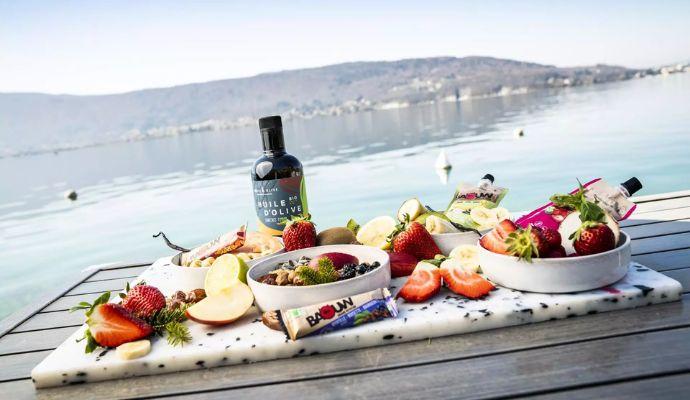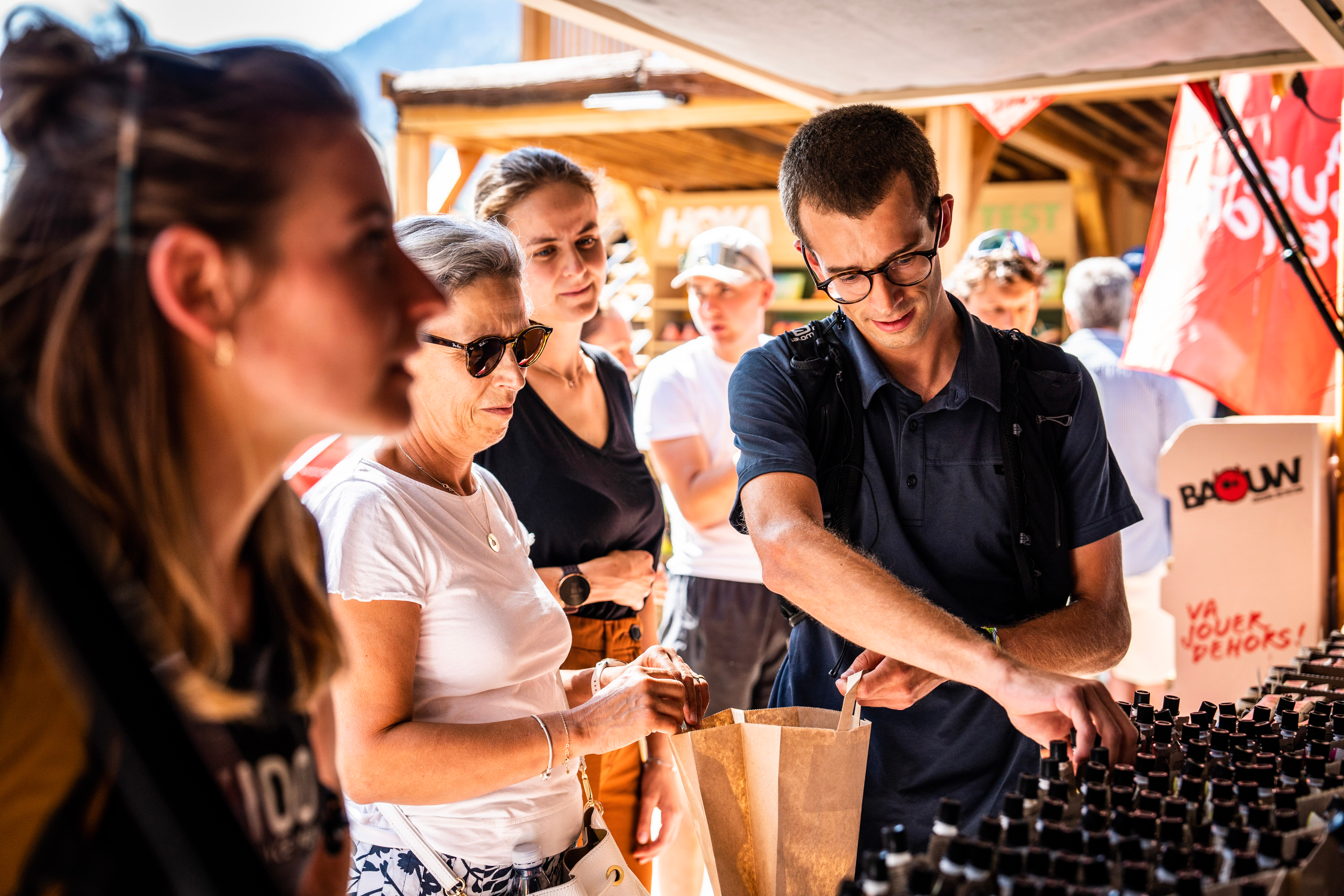The most gourmet of them all have a slogan: ‘Le gras, c'est la vie’ (‘Fat is life’). And we at Baouw, who love good food, tend to agree with them. We'd just like to add a slight nuance: ‘Fat (good) is life’. Omega 3, Omega 6 and lipids in general play a crucial role. Whether it's in the context of nutrition to have fun and perform well, or in everyday nutrition, to simply be in good health. So, what are Omega 3, Omega 6 and essential fatty acids? Why do they help to limit inflammation and reduce the risk of injury? When and how should they be consumed? Where can you find them? Benoit Nave,our expert nutritionist, and Jocelyn Guillot, the talented dietician on the no less talented Sidas-Matryx Team, answer these sometimes complex questions with easy-to-understand answers and easy-to-apply advice. Omega 3, Omega 6, inflammation, injuries... To find out all you need to know about healthy fats, click here!
OMEGA 3, OMEGA 6, WHAT ARE THEY?
‘Omega 3 and Omega 6 are referred to as essential fatty acids because the human body does not have the capacity to produce them on its own.
Benoit Nave is a nutritionist and occasional tightrope walker. It has to be said that, at times, he has to demonstrate great proprioceptive skills to get to the front of perilous exercises: ‘We're going to try to make a subject that may seem complex understandable through precise and easy-to-understand advice! Our expert, who also coaches top-level athletes, launches into the subject: ‘Omega 3 and Omega 6 belong to the family of fats, lipids. They are known as polyunsaturated fatty acids, which makes them fragile and less heat resistant than the saturated fatty acids found in large quantities in the food industry. They are also called essential fatty acids because the human body does not have the capacity to produce them on its own. That's what healthy nutrition is all about, because you need to provide them through your diet if you want to be in good health every day and perform well in sport. Jocelyn Guillot, also a master of balance, supports him: ‘Omega 3 and Omega 6 in the diet are absolutely essential for sportsmen and women. It's one of the keys to their natural health insurance, to limit the risk of injury.
WHAT IS THE DIFFERENCE BETWEEN OMEGA 3 AND OMEGA 6?
Benoit Nave note une première différence dans la composition et s’apprête à te faire ressortir tes cours de physique-chimie : « Dans le cas des Omega 3, c’est sur le 3ème carbone que se trouve l’atome insaturé. Dans le cas des Omega 6, sur le 6ème ! » Néanmoins, la principale différence réside dans leur fonction et dans leurs bienfaits. « La fonction fondamentale des Omega 3 est de favoriser la fluidité de la membrane des cellules et de moduler l’inflammation». Bref, les Omega 3, c’est top pour la santé et la performance ! »
‘The main benefit of Omega 6 is improved ventilation during exercise.
Et les Omega 6 ? « L’une de leurs missions fondamentales est de générer un meilleur fonctionnement des muqueuses, dont les muqueuses respiratoires. Le bienfait principal est alors une meilleure ventilation à l’effort. En gros, tu utilises plus et mieux cet oxygène dont les muscles sont si gourmands à l’effort ».
‘What counts is the ratio between the two, the balance. How much Omega 3 you get compared to how much Omega 6 you get.’
Jocelyn Guillot sheds some extremely interesting light on the difference between Omega 3 and Omega 6: ‘Beyond their differences, what's important is that they complement each other. And what counts is the relationship between the two, the balance. How much Omega 3 you get compared to how much Omega 6 you get’. You'll understand everything, we'll come back to it!
WHERE CAN I FIND OMEGA 3? WHAT FOODS ARE RICH IN OMEGA 3?
‘Foods rich in Omega 3? Small oily fish such as sardines, mackerel, herring and anchovies.
There are two types of Omega 3: Omega 3 of animal origin and Omega 3 of plant origin. Omega 3 of animal origin is the most important. Where can you find them? ‘In small oily fish such as sardines, mackerel, herring and anchovies. There's also some in salmon and tuna, but I'd recommend eating less of these large fish, which are loaded with heavy metals and other toxins in the polluted waters of planet Earth. Jocelyn Guillot adds: ‘You can also find these animal-derived Omega-3s in “Bleu-Blanc-Cœur” eggs, laid by hens reared on flaxseed, as opposed to battery eggs fed on wheat! And what foods are rich in plant-based Omega-3s? ‘Certain seeds, including linseeds, hemp seeds and chia seeds, all of which contain a lot of Omega 3; certain nuts, such as walnuts, hazelnuts and pistachios; linseed oil, walnut oil, rapeseed oil and soya oil; and, to a lesser extent, certain vegetables, such as raw spinach, olives and avocados.
WHAT FOODS CONTAIN OMEGA 6?
Jocelyn Guillot provides an exhaustive list of foods rich in Omega 6: ‘Sunflower seeds, sesame seeds, pumpkin seeds, poppy seeds, walnuts, peanuts, grapeseed oil, sunflower oil, hempseed oil, corn oil and animal products such as meat and poultry’.
WHEN SHOULD OMEGA-3S BE TAKEN: IN THE MORNING, AT LUNCHTIME OR IN THE EVENING?
‘Omega 6 should be taken in the morning and Omega 3 in the evening.'
Our expert nutritionist, coach to Xavier Thévenard, three-time winner of the UTMB, responds by saying: ‘You need to take the Omega 6s in the morning and the Omega 3s in the evening. It works better that way. Omega 6s are better metabolised at breakfast and Omega 3s at dinner.
HOW MUCH OMEGA-3 DO I NEED?
‘How much Omega 3 should you take a day? That's a complex question.
Benoit Nave gives a concrete answer: ‘You should eat the equivalent of 2 or 3 cans of sardines a week, or portions of 120 to 150g of small oily fish, 2 or 3 times a week’. The Sidas-Matryx Team nutritionist adds: ‘If you use vegetable oils to season your salads as a complement, then that's royal!
HOW CAN NUTRITION HELP REDUCE THE RISK OF INFLAMMATION?
‘Be vigilant about the Omega 6 / Omega 3 ratio. So, overall, eat more Omega 3 and a little less Omega 6!'
Nutrition is one of the keys to a healthy, high-performance body! This is the conviction that drives us to put so much passion, attention and meticulousness into the design of our recipes and the quality of our 100% natural bars and purées, with no added sugar.
Our two expert nutritionists ping-pong and give their nutritional advice to limit inflammation and therefore reduce the risk of injury:
- ‘Be vigilant about the Omega 6 / Omega 3 ratio. So, overall, eat more Omega 3 and a little less Omega 6!
- « Manger des fruits et des légumes en quantités suffisantes car leur vertu basifiante va venir atténuer l’effet acidifiant des céréales et des protéines. Pour les plus curieux, il est possible de se documenter et travailler pour diminuer son indice de PRAL, l’indice qui donne une indication quant à l’effet acidifiant et donc inflammatoire de chaque aliment. »
- ‘Provide as many antioxidants as possible, particularly those that are often deficient, such as zinc, magnesium, iron, vitamin A and vitamin D.'
A healthy, local and organic diet - where you don't deprive yourself of anything, but don't overdo it - ticks all these boxes. ‘By consuming cold meats, meats, refined products and alcohol, all of which are known to have a pro-inflammatory effect, in the greatest possible moderation,’ concludes Benoit!
JOCELYN GUILLOT'S EASY, DELICIOUS TIPS FOR EATING MORE OMEGA-3S WITHOUT REALISING IT:
1/ ‘Dress raw salads with linseed oil, walnut oil or rapeseed oil’.
2/ ‘Don't hesitate to add walnuts, hazelnuts or pistachios to your cake recipes’.
3/ ‘Add linseed or chia seeds to yoghurt’.
4/ ‘Keep your oils in a cool place, so as not to destroy the Omega 3s, which are very fragile, and avoid using these Omega 3-rich oils for cooking!
5/ ‘Choose Bleu-Blanc-Cœur eggs, or eggs fed on linseed! And ideally, cook these eggs over easy, with a yolk that's not overcooked, but rather runny’.








